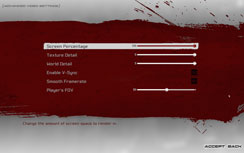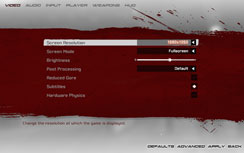Unreal Tournament 3
Publisher: MidwayUnreal Tournament 3 is the latest addition to the Unreal franchise and it is a clear attempt to replace the previously separate games. Unreal used to be very focused on singleplayer elements, while Unreal Tournament's focus was on the multiplayer side of things.
The game is based on Epic's heavily licensed Unreal Engine 3 technology, which is used by many games that were released last year or are due for release over the next couple of years. The current version of Unreal Tournament 3 only supports DirectX 9.0 but Mark Rein, vice president of Epic Games, said that DirectX 10 support in UT3 is forthcoming.
The engine uses a Deferred Rendering technique, which basically prevents the game from supporting anti-aliasing techniques in a traditional sense because there are multiple surfaces stored in the MRTs. In fact, Epic decided that there wasn't even a need to include application-controlled anisotropic filtering - instead, we had to force anisotropic filtering from the driver control panel.
Because of the variability in this title, being a multiplayer game, we played five three minute bot matches against 23 bots on the vCTF-Sandstorm map, recording the average frame rate over this period. We then removed the highest and lowest results to remove outliers and the average of the remaining three is the frame rate we are displaying here -- this represents around nine minutes of typical gameplay.
BFG Tech's GeForce 9600 GT OC 512MB graphics card is again just a few percent behind the Zotac GeForce 9600 GT AMP! Edition and it's again a few percent faster than the reference clocked card. This time around though, the ATI Radeon HD 3870 is faster than all of the GeForce 9600 GTs at 1280x1024 and a hair faster than the BFG Tech card at 1680x1050.
At the same resolution, PowerColor's cheap and cheerful factory overclocked Radeon HD 3850 512MB card is around six percent slower than BFG's 9600 GT OC, and at 1280x1024, the gap is just over seven percent. That's not bad considering the difference in price is around 10 percent and you'll probably pushed to notice a difference in a blind taste test using real-world gameplay.

MSI MPG Velox 100R Chassis Review
October 14 2021 | 15:04











Want to comment? Please log in.